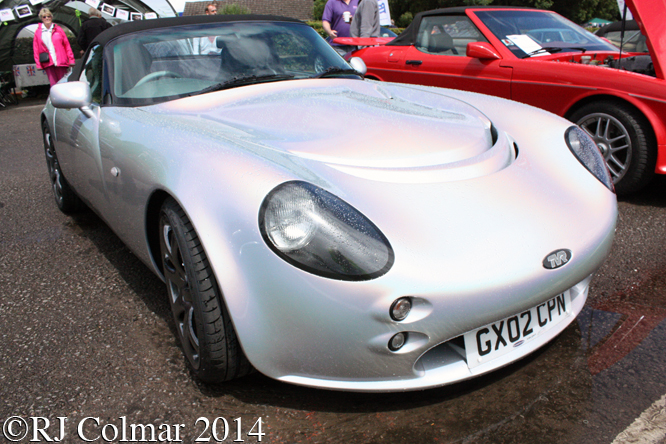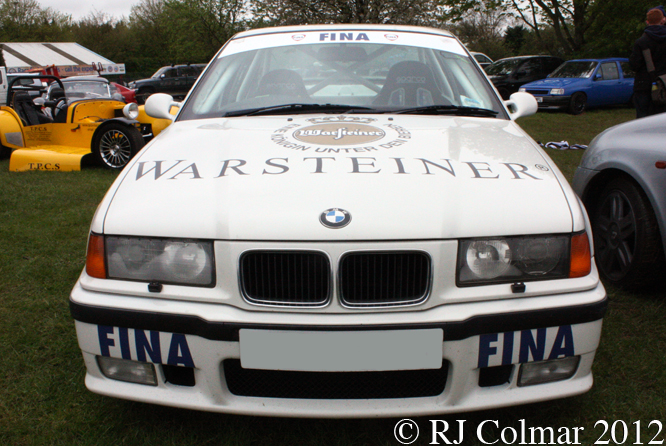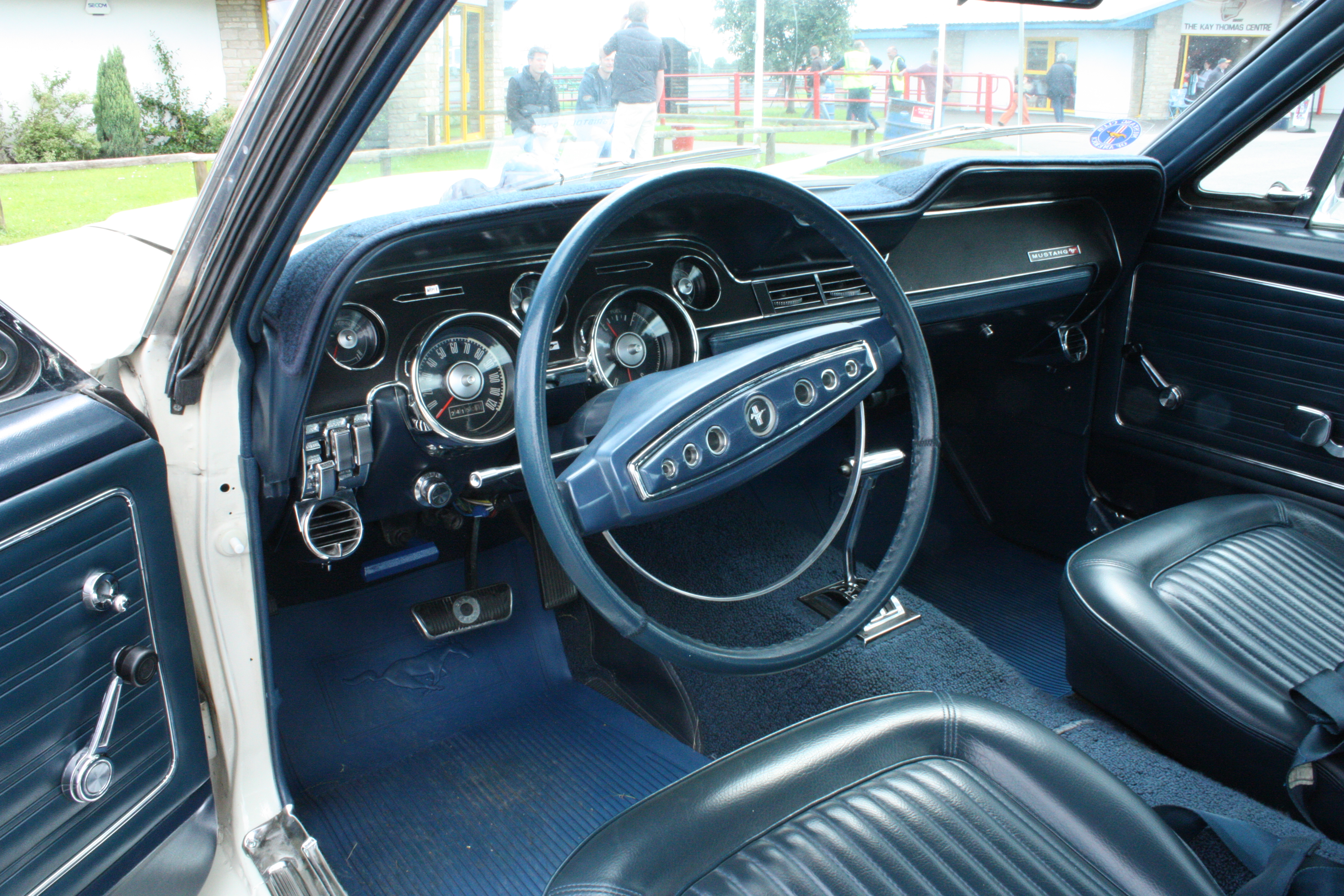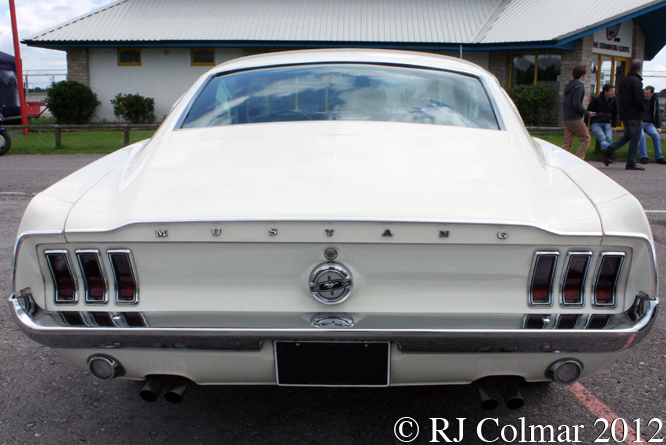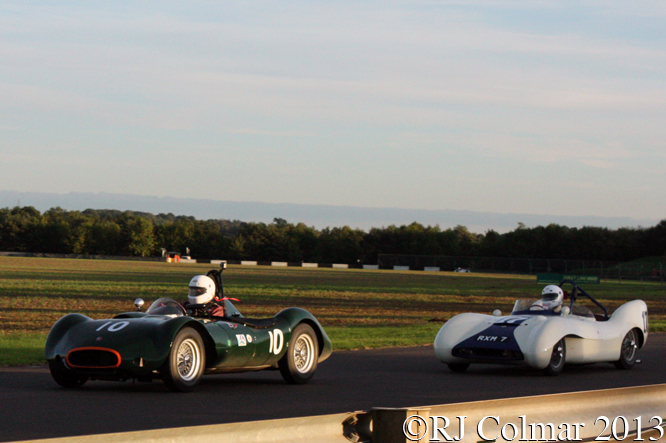On Sunday I popped along to Castle Combe where my friends son Ben Goodman was taking part in the Renishaw Castle Combe Heat 2014 meeting for electric vehicles in the Greenpower series designed to inspire young engineers.
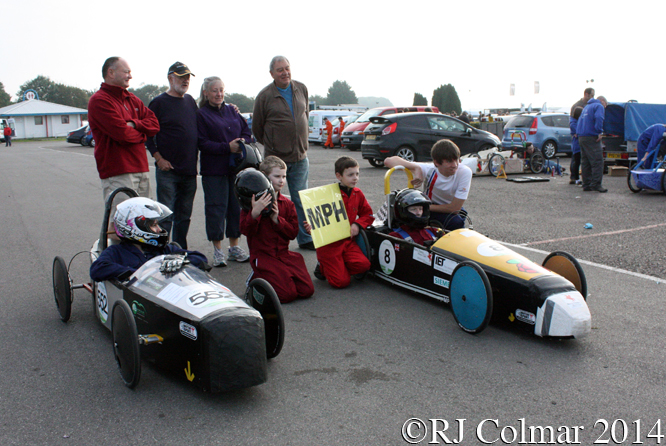
Ben seen above in the #552 MPH+, Magnotsfield Petrol Heads, races in the F24+ class for 24 volt powered vehicles with drivers aged 16 to 25. Next to him is Magnotsfield Schools original #8 MPH which finished 8th in last seasons F24 class for drivers 11 to 16.
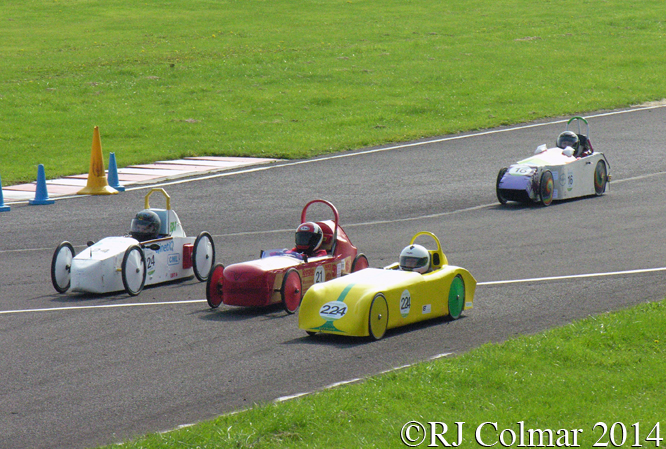
The Greenpower Series races last 90 mins for the younger F24 class requiring 2 driver changes while the races for the F24+ class are single driver one hour ‘sprints’. There were two races for the F24 class and only one for the F24+ class.
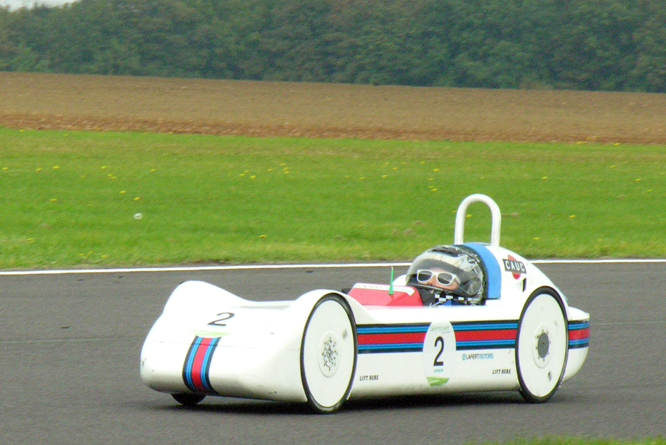
What really astounded me about these races was variety of approaches to making a vehicle with a stock battery and stock motor go the furthest distance, added to which Sandbach High School went the extra mile and added cool graphics to both of their vehicles the Martini striped Dougal above and …

…Brian which alongside the circa 1973 Lotus inspired graphics above carries the strap line “Complete And Utter Chaos” with CAUC logo’s. Unfortunately while quick Dougal proved to be unreliable while Brian made it to two mid table finishes in the F24 races and 15th from 19 in the F24+ race.
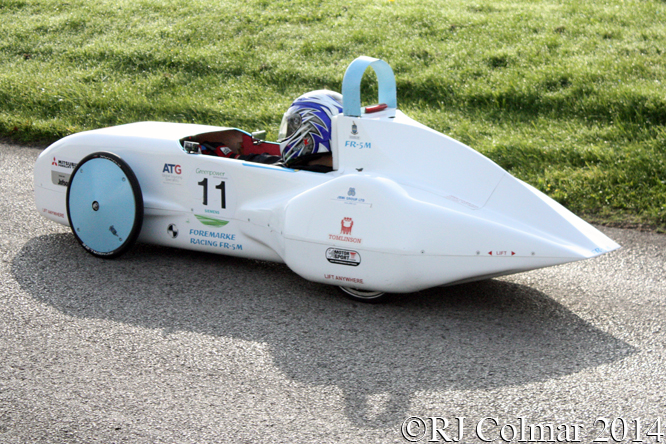
The FR-5M from Foremarke Hall school in Derbyshire showed some particularly elegant lines around the rear wheels. The FR-5M only took part in the F24 races finishing 10th in the first race and 13th in the second.

Twin boom cars are a rarity despite having appeared in Can Am in the 1980’s, the Indy 500 in the 1960’s and Le Mans 24 hours in the 1950’s, if with little success. The local Chipping Sodbury School have revisted the theme with their BY-Pod which finished 7th in the F24+ race covering 31.5 miles in an hour.
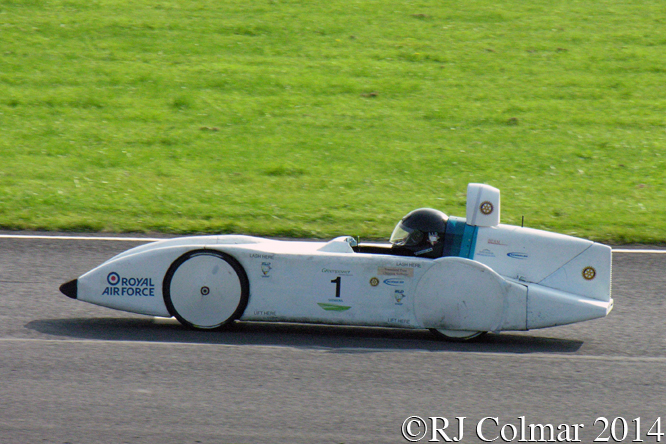
Chipping Sodbury’s lead entry Rotary Racer+ won both of the F24 races and finished second in the F24+ event covering 37 miles in an hour.

Winning the F24+ event by a whole lap was Jet entered by Cullimore Racing for David Cullimore, National Champion since 2012, who covered 38.8 miles in the hour.
Ben finished a respectable 10th with 27.6 miles recorded and the #8 Magnotsfield School car finished 9th in the first F24 race with a team of rookie drivers, but could only manage 23rd in the second thanks to suspected tracking damage.
My thanks to Pete Goodman and Martin Baker for telling me about this event.
Thanks for joining me on this “Inspiring Engineers” edition of “Gettin’ a little psycho on tyres” I hope you will join me again tomorrow. Don’t forget to come back now !














